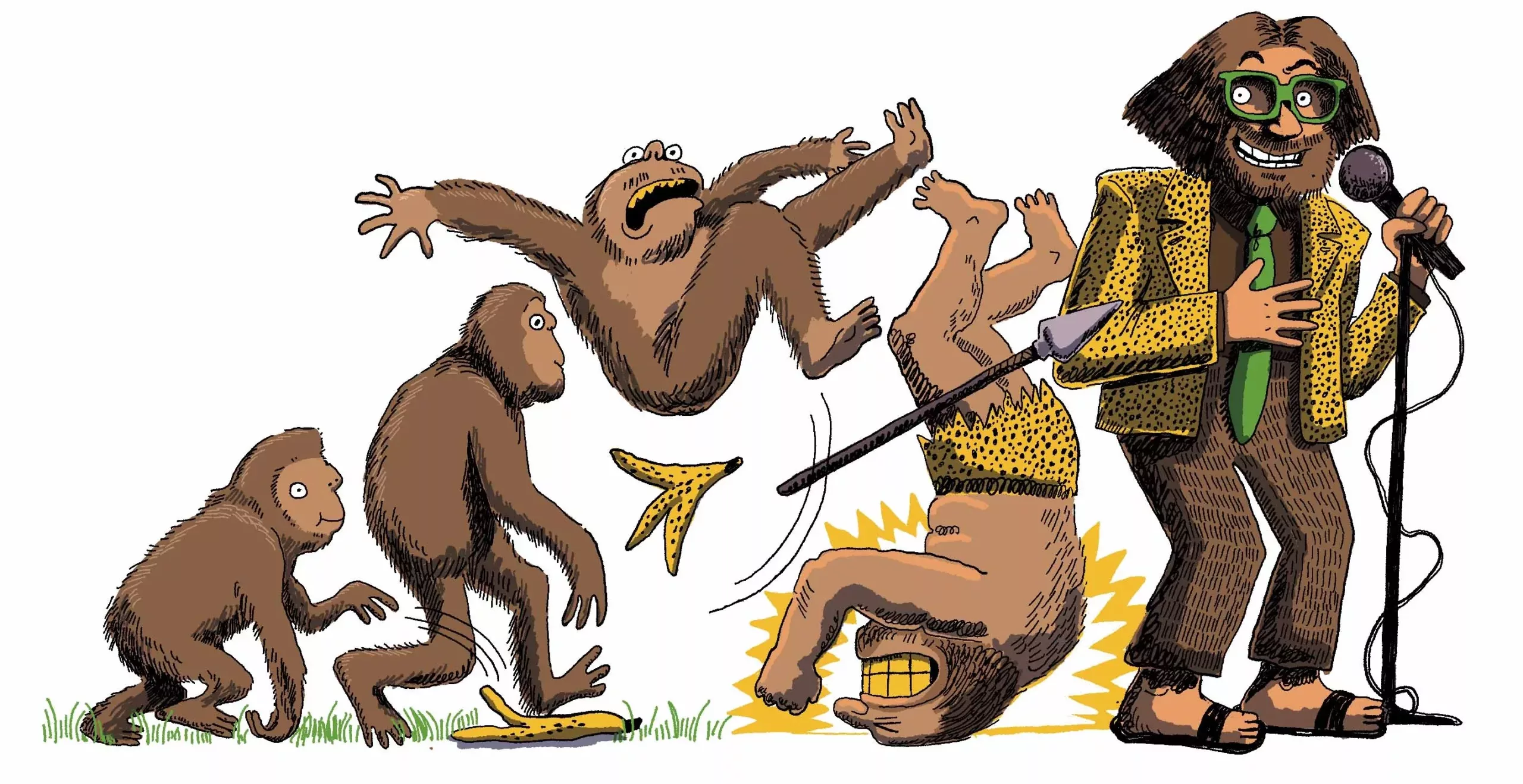“A day without laughter is a day wasted.”
—Charlie Chaplin
Industry comes to an abrupt halt when a new cat video or Jimmy Fallon clip hits the internet. Millions of viewers stop whatever they’re doing at the moment—work, shopping, exercising—and glue themselves to a screen.
When Charlie bit his big brother’s finger, more than 886 million viewers tuned in. That’s about a tenth of the world’s population.
When Adele joined James Corden for a round of Carpool Karaoke, it tickled the funny bones of 264 million people.
And when native Virginian and comedian Wanda Sykes talked about her kids saying grace on the Ellen DeGeneres Show, YouTube clocked four million viewers.
The common denominator? Each clip brought laughter to people all over the globe.
Such a funny thing, laughter. Its meanings are many, and its roots are deep. So intriguing is the subject of laughter that three professors at the University of Virginia lead classes or studies on the topic. The nuts and bolts of why and how we laugh are examined in order to study society—both now and in days gone by. But can the laugh-worthy fodder of yesteryear tell us anything useful?
Ancient Funny Bones
UVA assistant professor of classics Inger Kuin, Ph.D., teaches the class “Engaging Difference: Why Do We Laugh?” A student of ancient Greek authors who used humor, Kuin came up with the idea after considering how humor can survive over the years.
“What can we know about what people find funny in times and places and cultures so far from us?” Kuin wonders, adding, “How is it that these things are still funny and what does this tell us about human psychology? If we can share something as fundamental as what’s funny over such a great geographical and chronological time span, does that say something about some things that are universal about human psychology?”

Kuin has a lot to say about funny business. Laughter, she says, has been around as long as humans. And we are not the only ones who laugh—monkeys and dolphins are just a few other species who like to get their giggle on.
Humor throughout the ages is reflected in society. Though times change, some things do not, Kuin says.
“Sort of the fundamental workings of the joke—namely that you laugh at things that are surprising or unexpected, or incongruous somehow—is very much the same,” she says.
The Best Medicine
As it turns out, there are plenty of positives to laughing—as a tension soother, pain reliever, mood enhancer, immune booster, stress buster, and relationship builder—according to studies from the Mayo Clinic.
“It is intrinsically rewarding because of those hormones that get released. It smooths out social interactions by undoing any awkwardness or misunderstandings,” says Adrienne Wood, Ph.D., UVA assistant professor of psychology. “It is one of the best behavioral markers of social connection—we can tell whether two people are friends based on how much they co-laugh, meaning laugh at the same time. Some of my work has shown that individuals who laugh a lot are seen by others as being more relatable.”

But anyone who has ever watched America’s Funniest Home Videos or Instagram clips of all manner of falls and foibles knows laughter has a darker side.
“There’s the outright unpleasant laughter we’re all familiar with; sometimes it’s obvious someone is laughing at you or another person,” says Wood, who runs the Emotion and Behavior Lab in UVA’s Department of Psychology. “It’s used to convey messages like derision, teasing, and disdain.”
And superiority, says Kuin.
Theories of Humor
“There’s one major theory about laughter and humor which is to say that we laugh out of superiority—the feeling when you see somebody fall and slip on a banana peel. Part of that laughter comes from the notion that at least it’s not you, right?” says Kuin. “This is something that is not very pretty to realize about the way that our humor works. But once students sort of get over that initial shock, they start to analyze all the things that they find funny.”

Generally speaking, there are three main theories about why people laugh: in addition to superiority, the others are relief or incongruity. John may find clips of people tripping and falling absolutely hysterical, but Jane doesn’t find them funny at all. His laughter may be triggered because he sees himself: he may feel relief that he’s not the one cascading down those steps (relief), and he also may be laughing at the unexpected because he’s being taken entirely by surprise (incongruity). If John were a different sort, a clip of someone tripping and falling might elicit a reaction like, “I’m certainly not that uncoordinated” (superiority). Jane, on the other hand, may be a star athlete and highly coordinated. She can’t relate at all to watching people fall and can’t possibly imagine herself teetering in her Jimmy Choos and tripping her way down a sidewalk.
So What Is A Laugh?
Here’s a quick 411 on the science of laughter: Wood describes it as “repetitive forceful exhalations”—when you breathe normally, your body (your diaphragm and the muscles around your ribs) does most of the work while you’re inhaling. And then exhaling is fairly passive, but when we laugh, we actively push air out of our lungs, and inhalation is mostly passive.

“If you’ve ever laughed so hard you felt like you couldn’t breathe, it’s because you were depending on little moments of passive inhalation between forceful bursts of exhalation,” Wood says. “Some evidence suggests it releases hormones in your brain—endogenous opioids—that feel pleasurable.”
Wood says UVA’s Emotion and Behavior Lab studies social connection and is interested in how people connect with each other using nonverbal behavior (like laughter) and conversation, as well as how connections between individuals add up to become complex social networks. When two people laugh at the same thing, it’s a way for them to connect. A group of strangers might bond more successfully (and enjoy themselves more) over laughter than they would if the conversation veered into serious territory like Keynesian economics or Thomas Hardy’s poetry. “We’re particularly interested in helping people be more socially exploratory and willing to interact with new potential friends,” Wood says.
Laugh Class
UVA assistant media studies professor Pallavi Rao teaches the class “Just Kidding: Humor and Laughter Across Popular Media.” Humor-minded students learn comedy’s backstory—how the art form has gone through phases of low-brow humor, slapstick, and cheap laughs, to evolve intellectually to satire and more. Essentially, Rao says, what makes people laugh is evolving.

“A lot of the course is coming from a very critical media study standpoint; we think about the social, cultural, and political context under which certain kinds of humor can be conveyed and so it ends up being quite critical,” Rao says. “We are very much talking about ‘is laughing at disability acceptable? Who can laugh at certain ethnic groups?’”
Not surprising, Rao says the waitlist for her laugh-centric class is almost as long as the class roster itself. Learning about laughter is a big draw for college coeds.
“I think getting students to think seriously about what they do so easily is often the charm of this class,” says Rao. “It’s the class that fills up straight away within a day of enrollment opening.”
Homegrown Humorists
Five of the comedians pictured below are from Virginia. Can you guess which ones?

This article originally appeared in our December 2024 issue.
Answers: Wanda Sykes, Patton Oswalt, Jason Sudeikis, Danny McBride, Jay Pharoah










